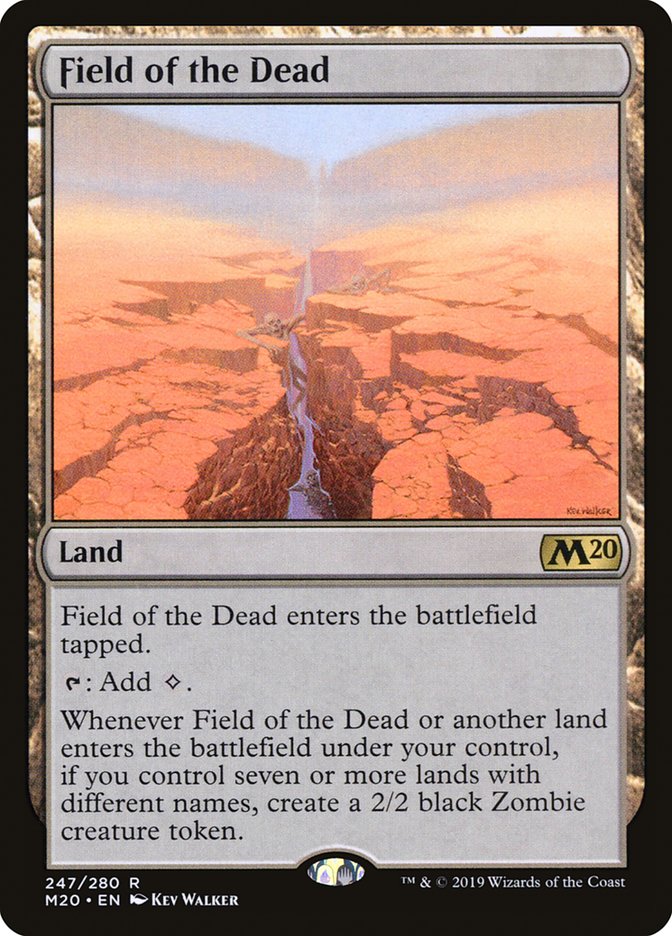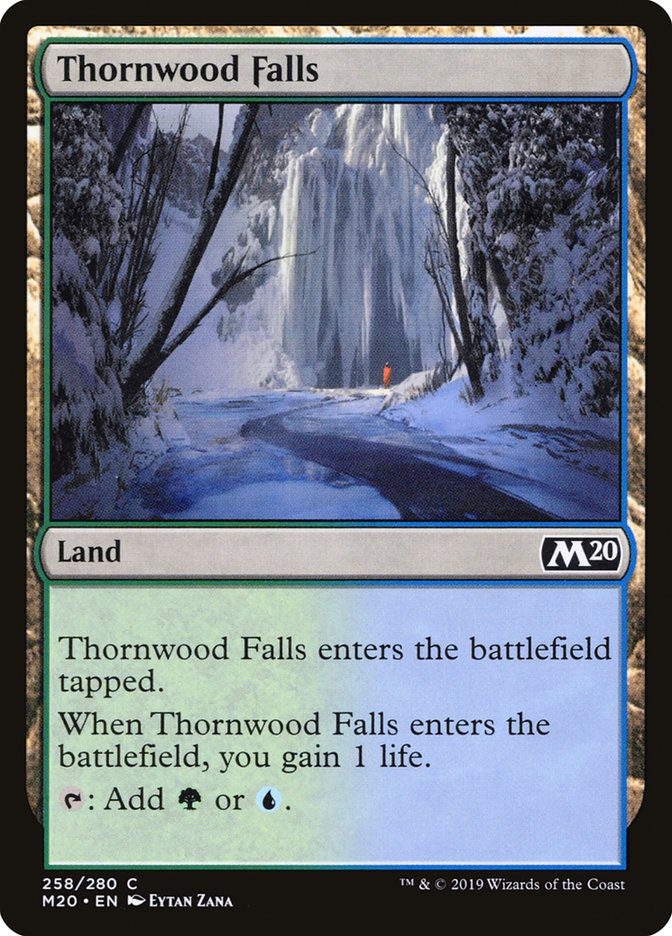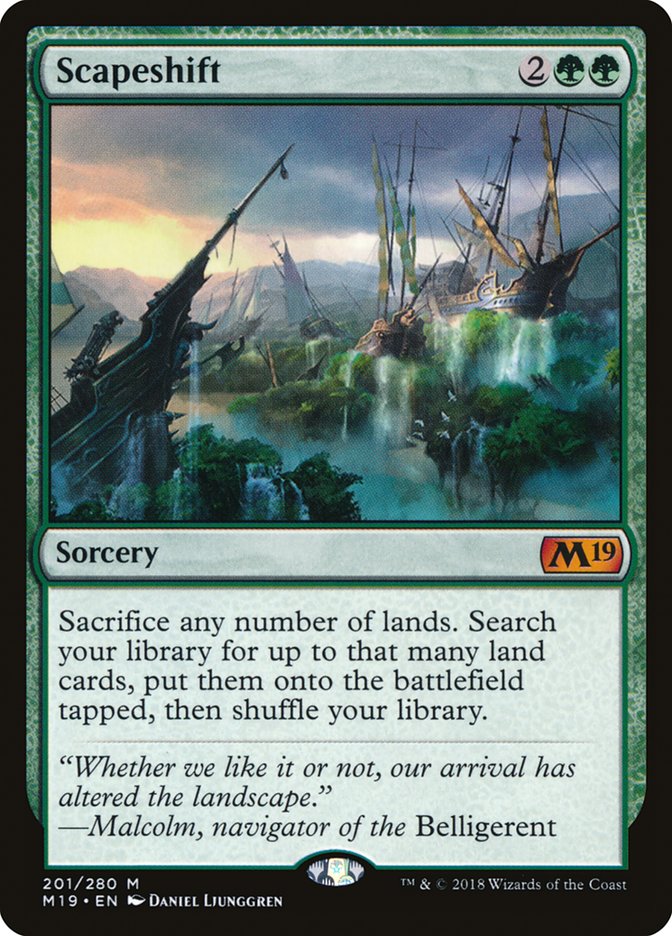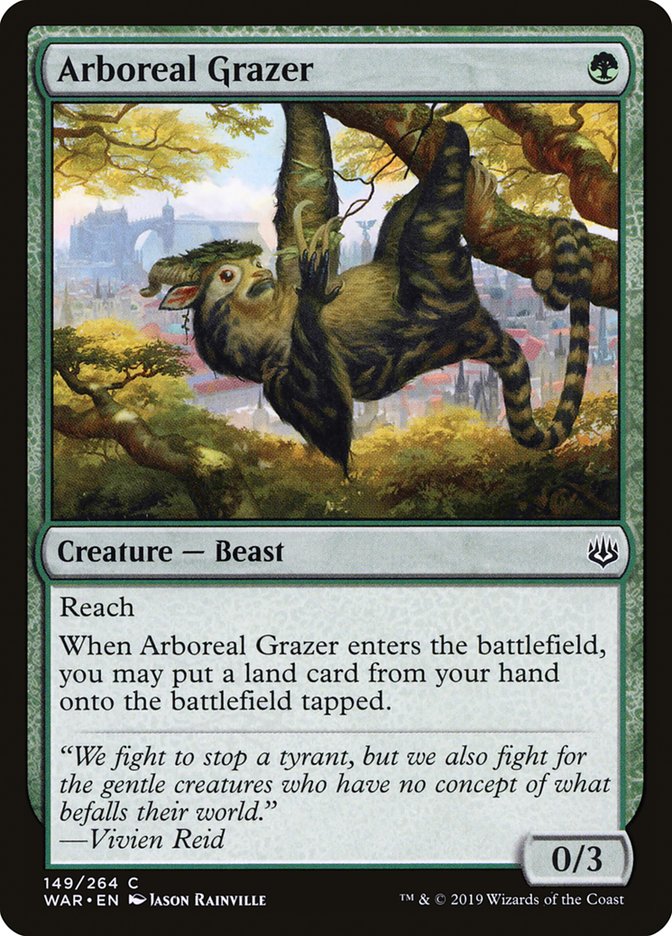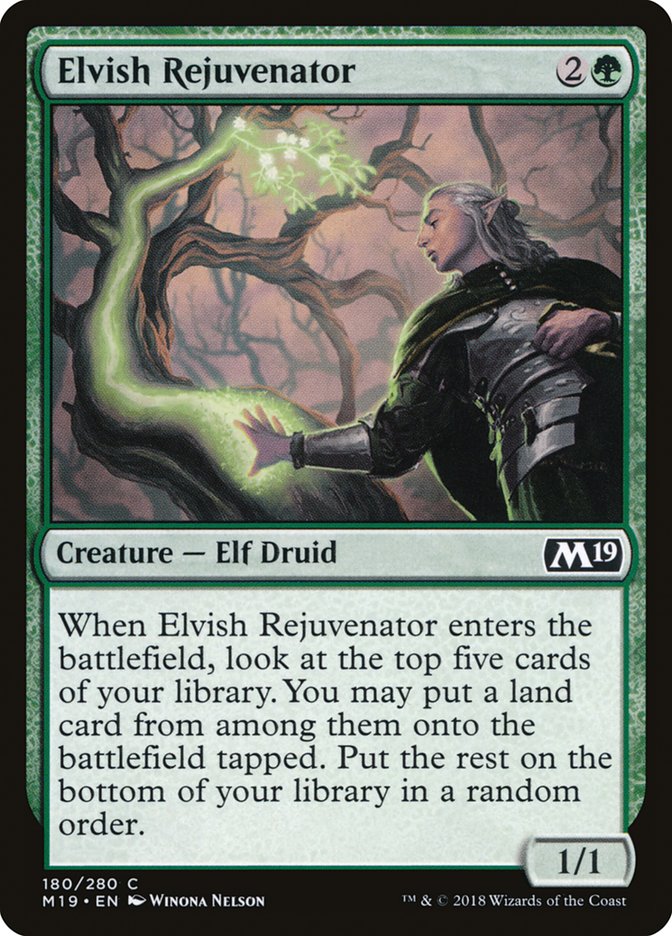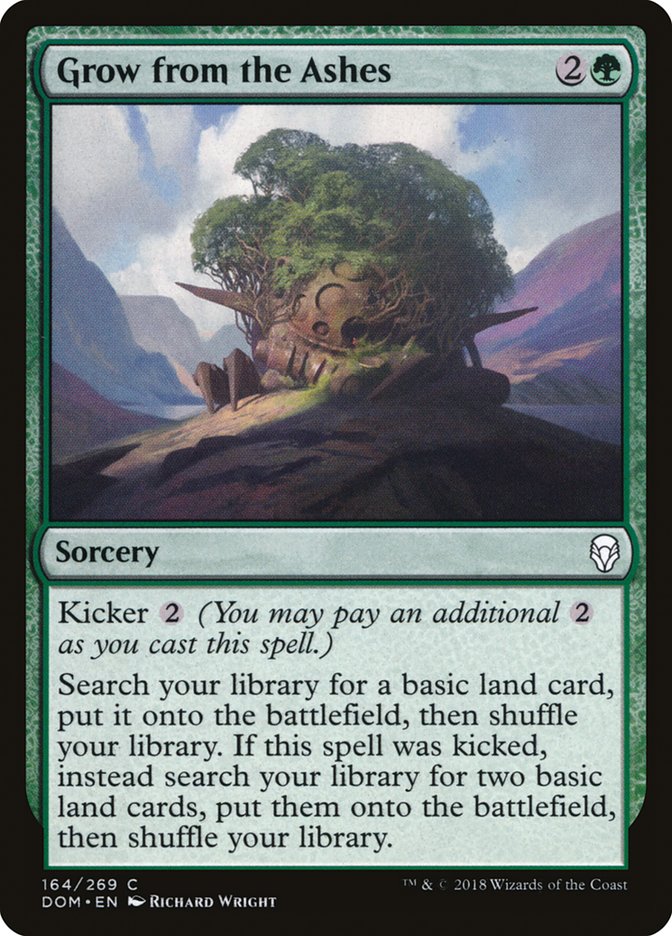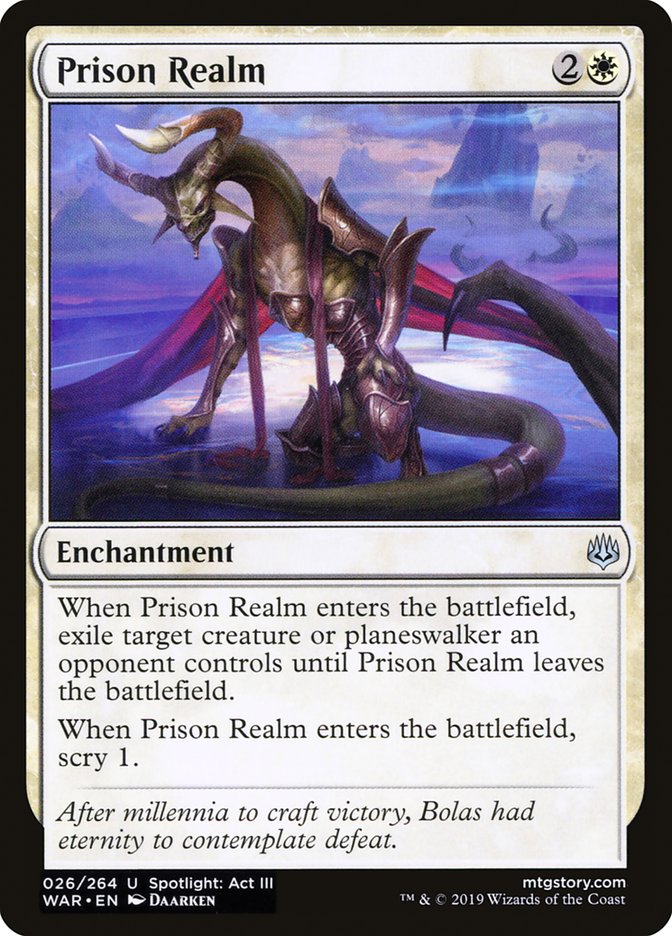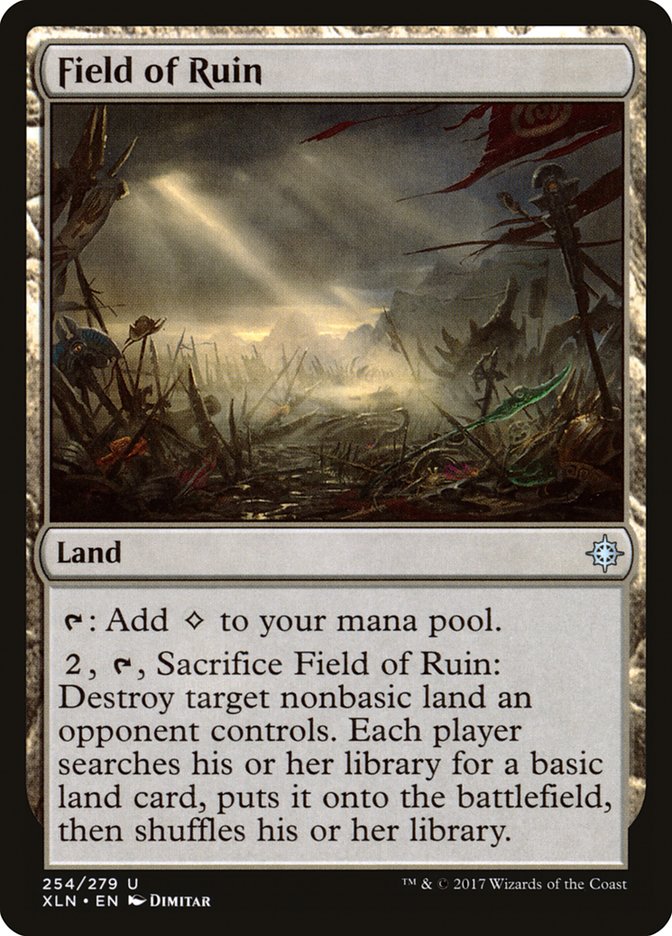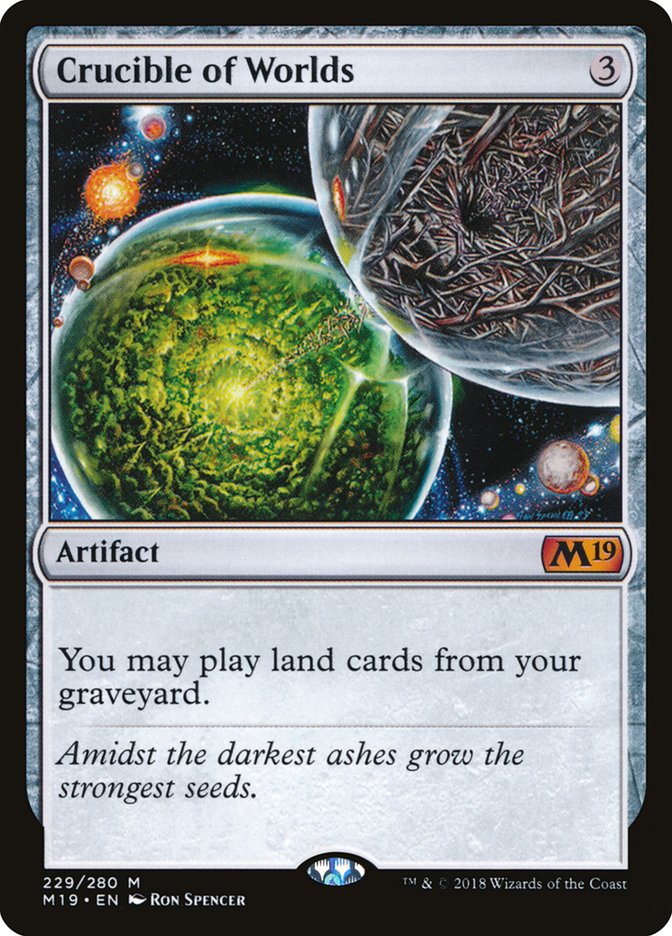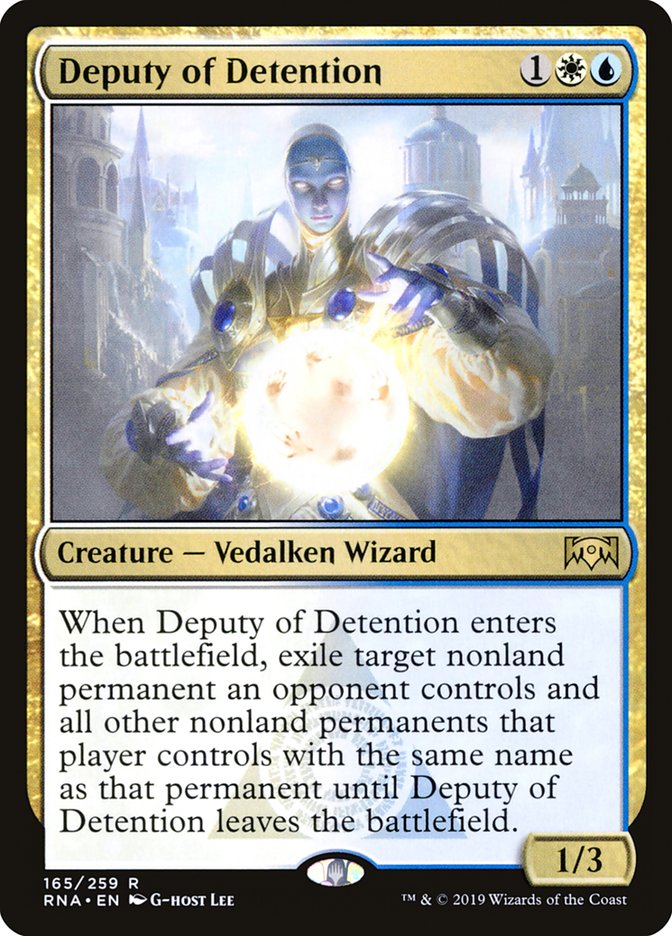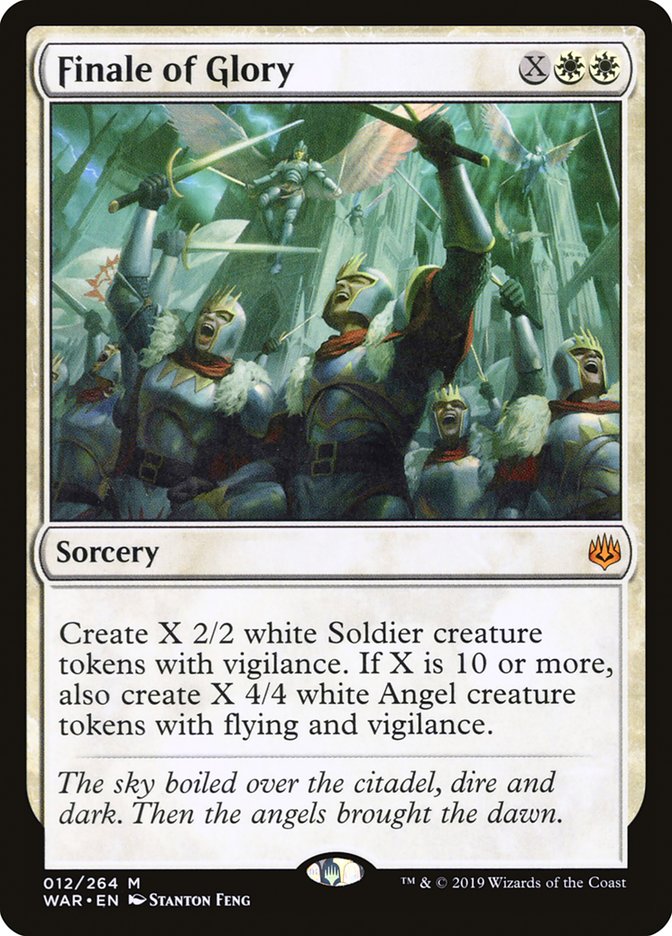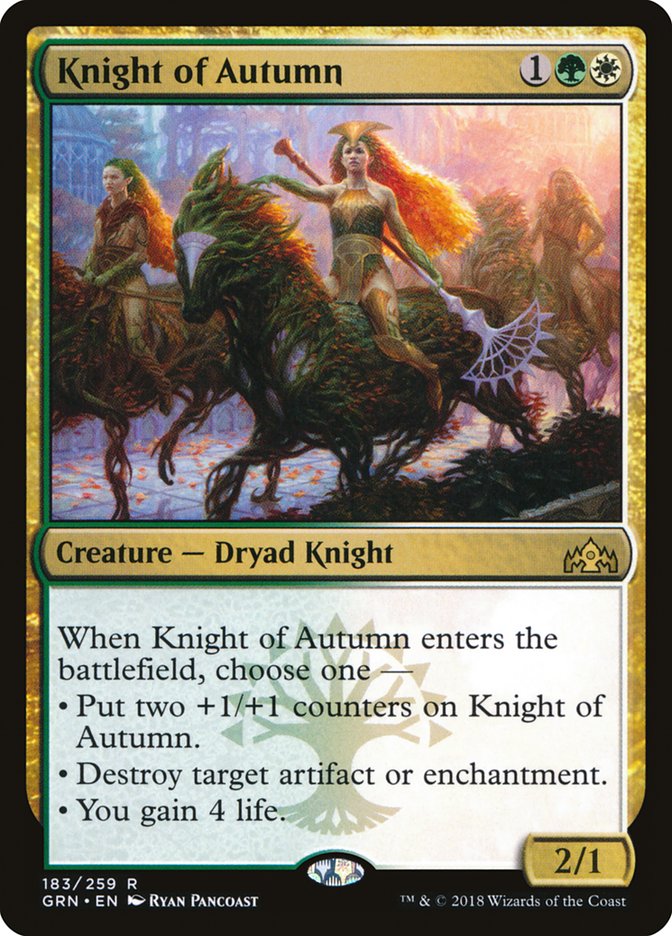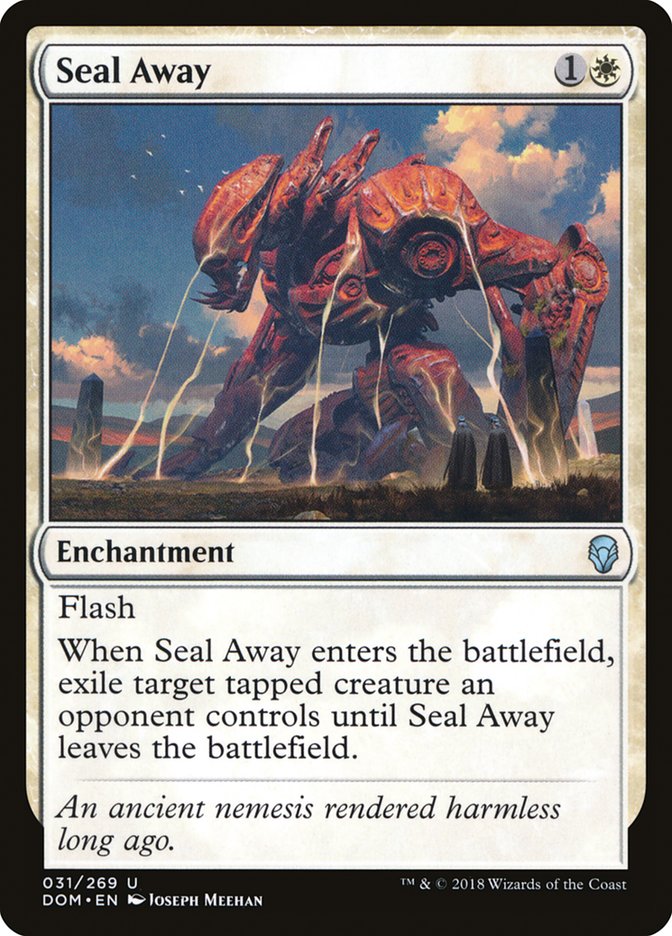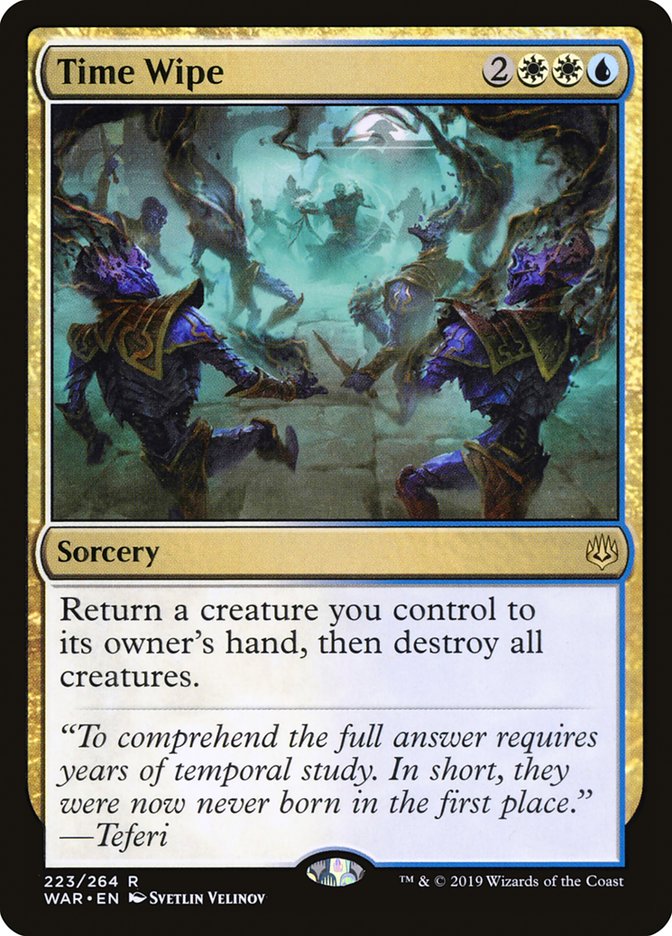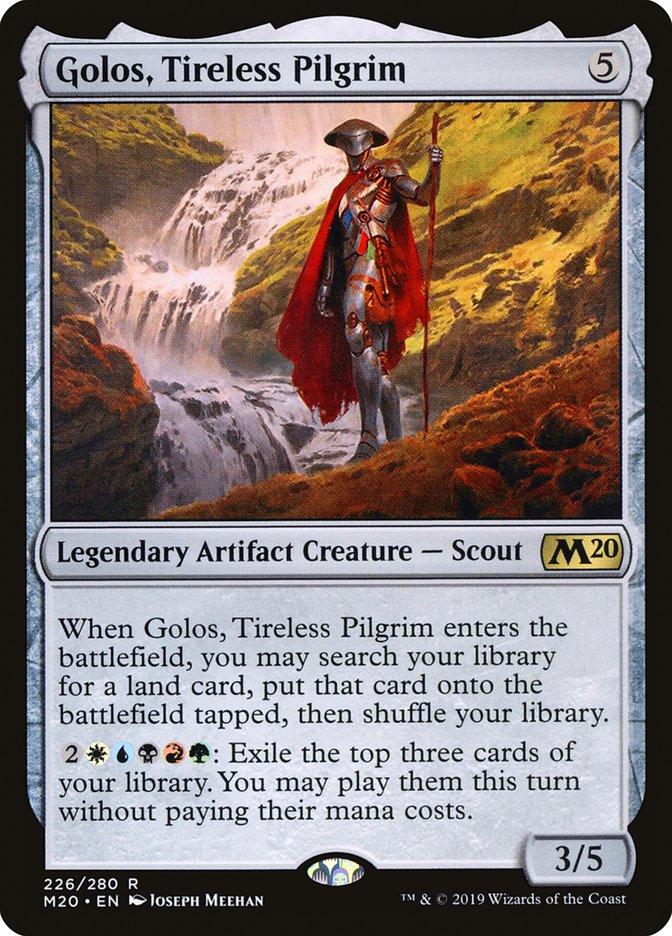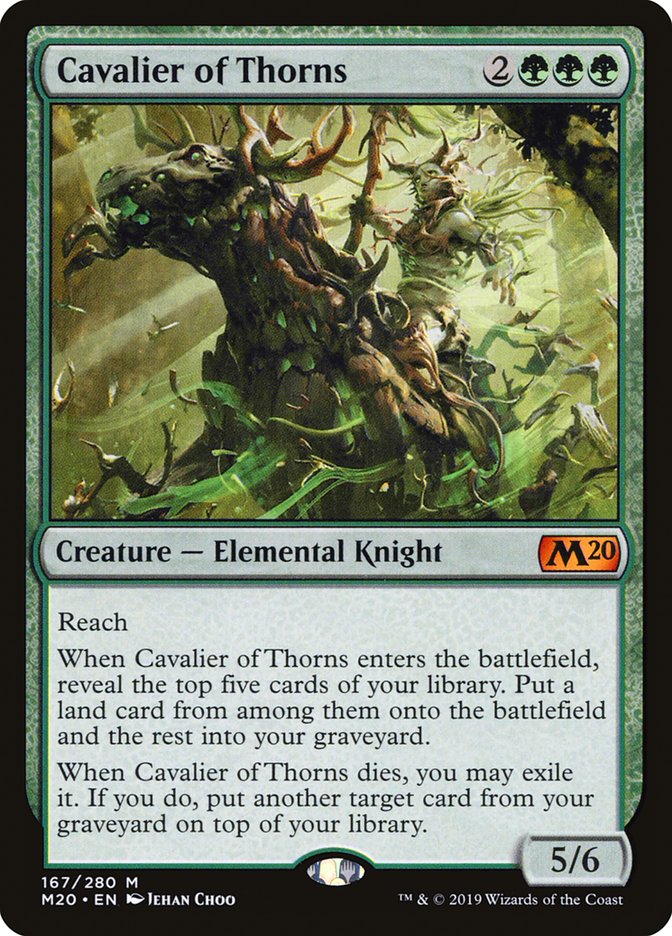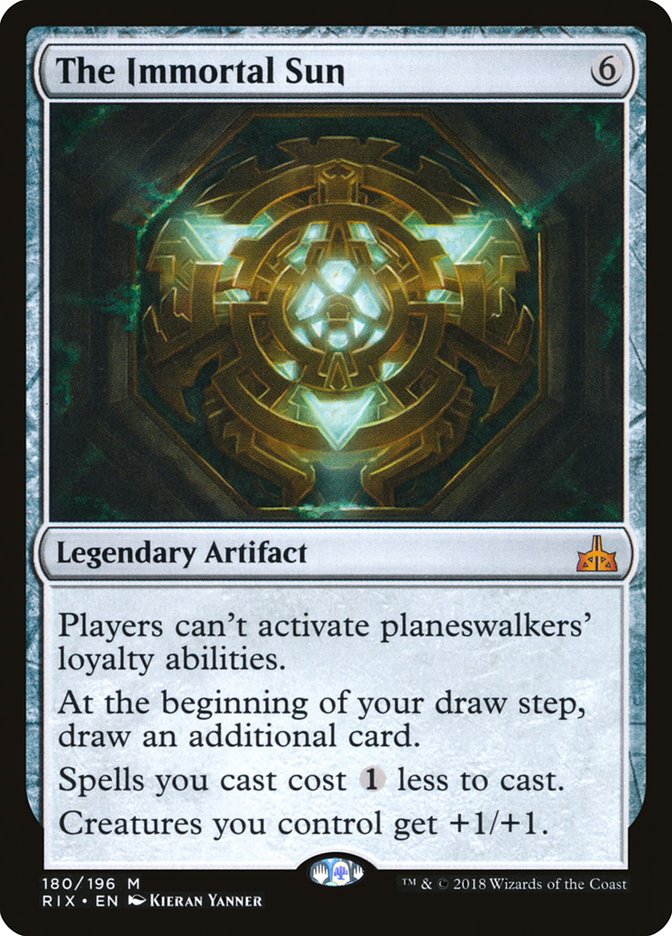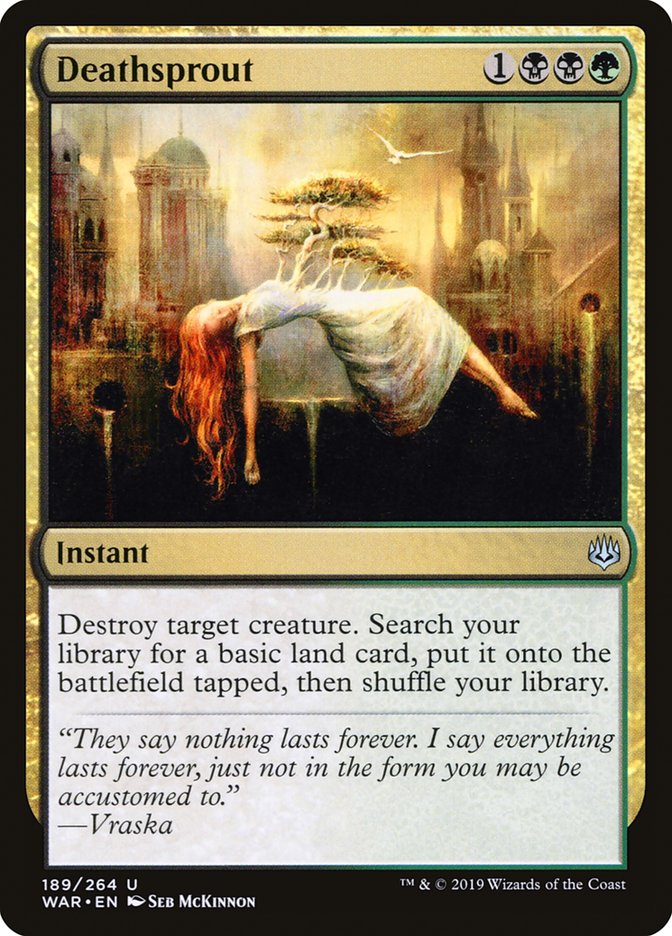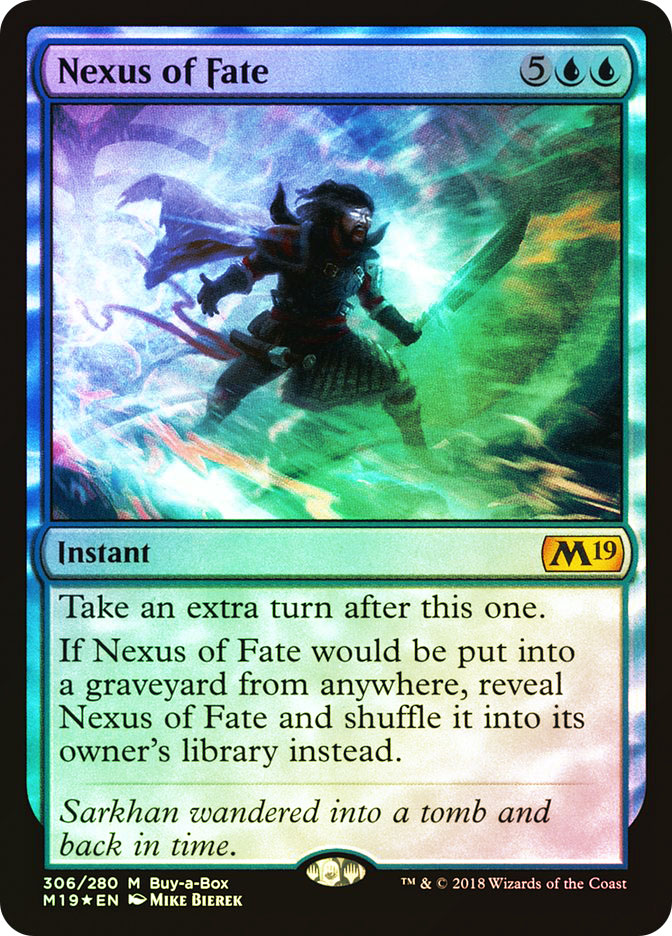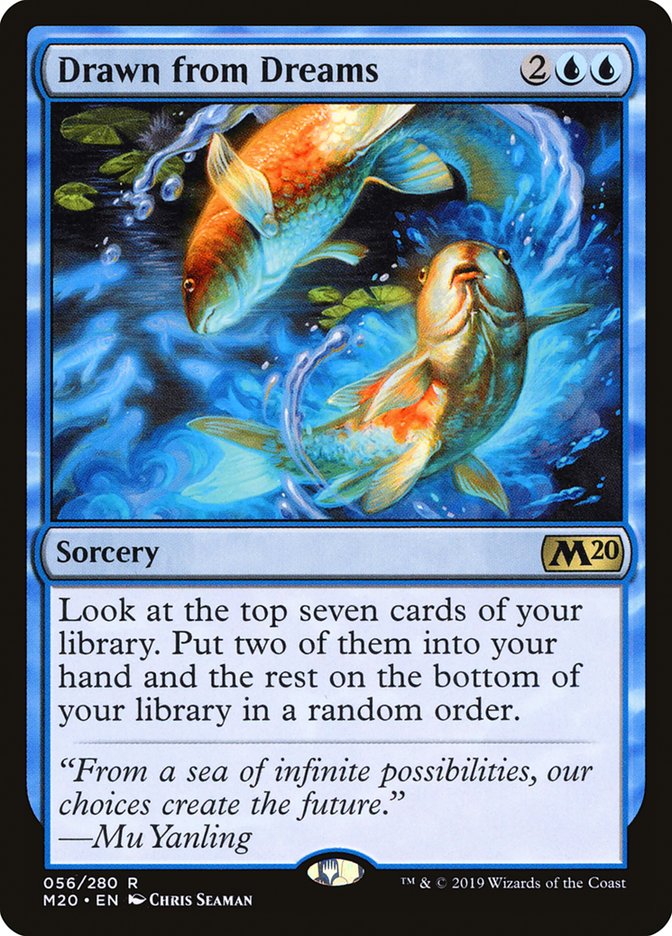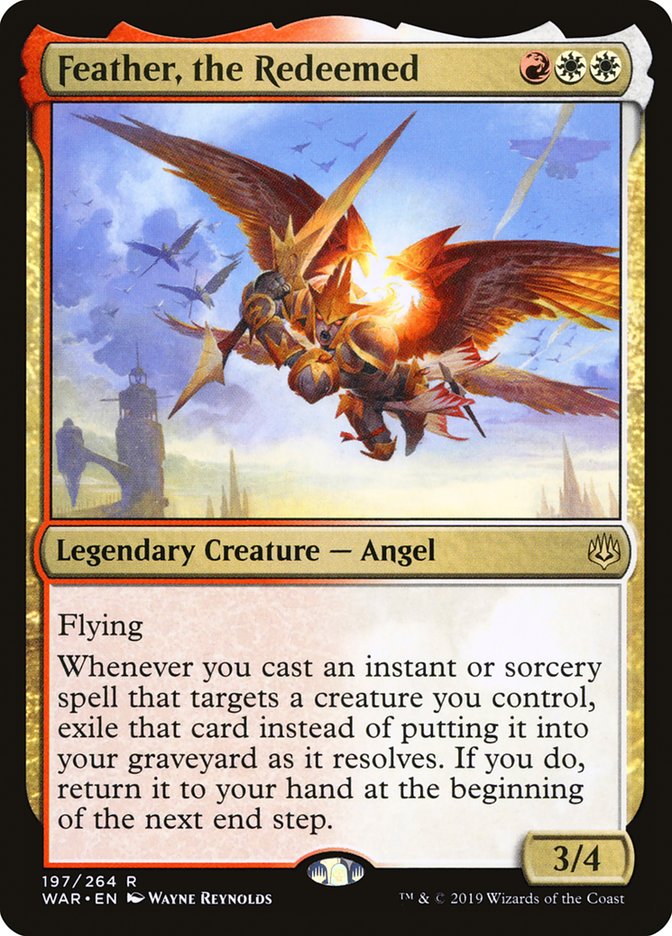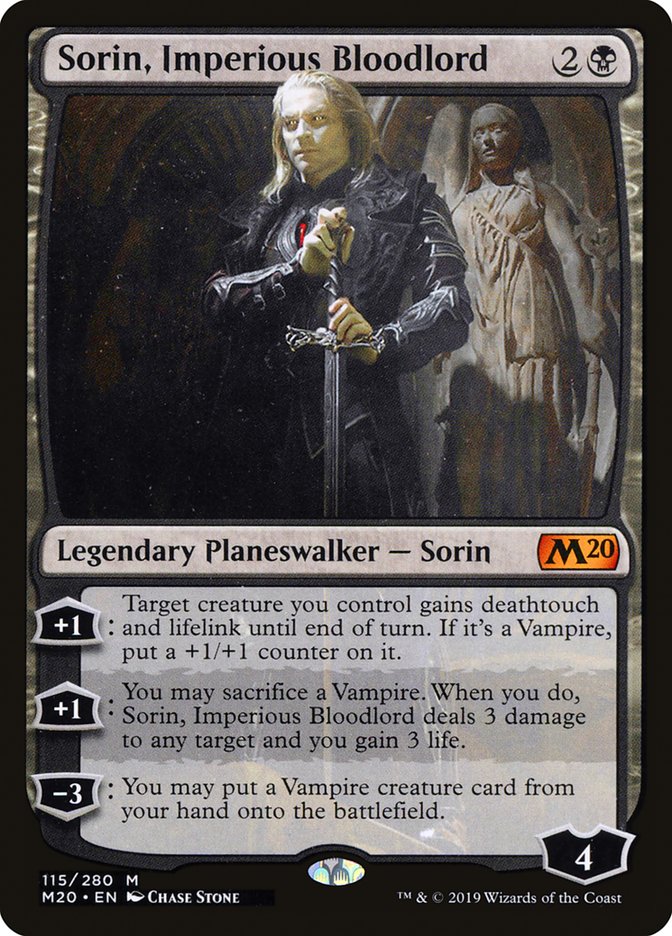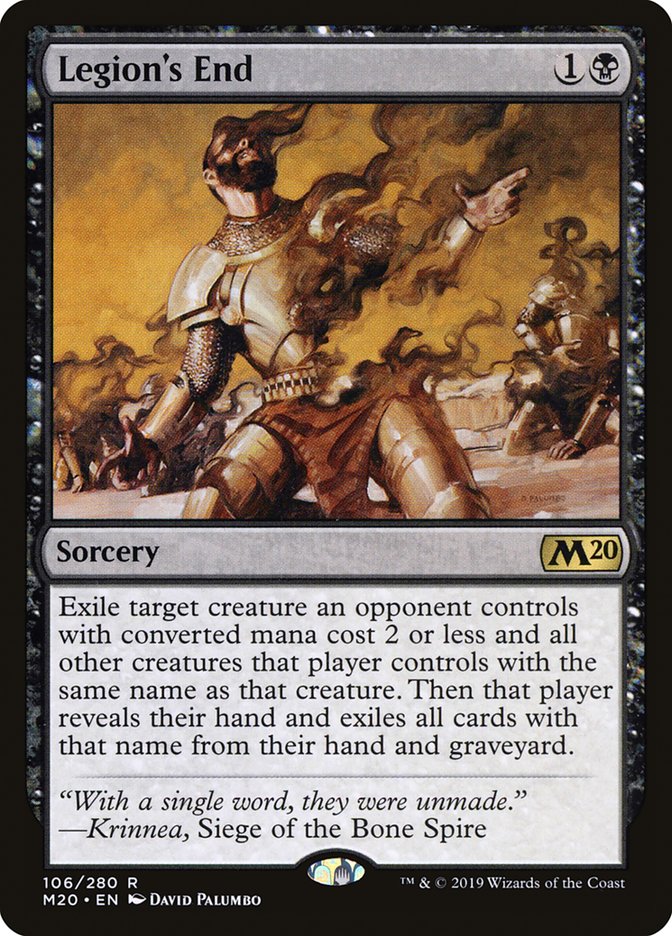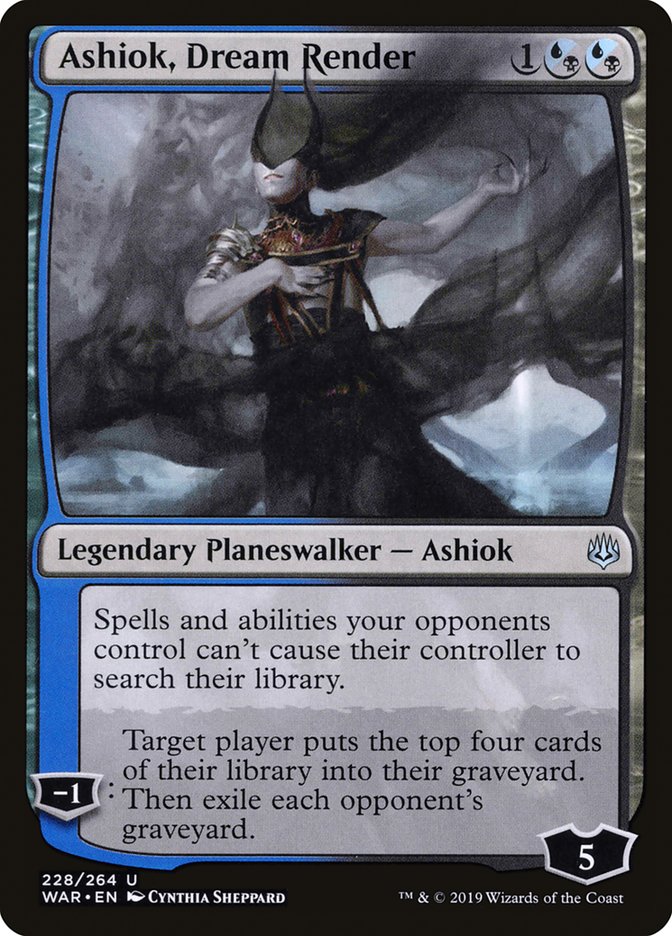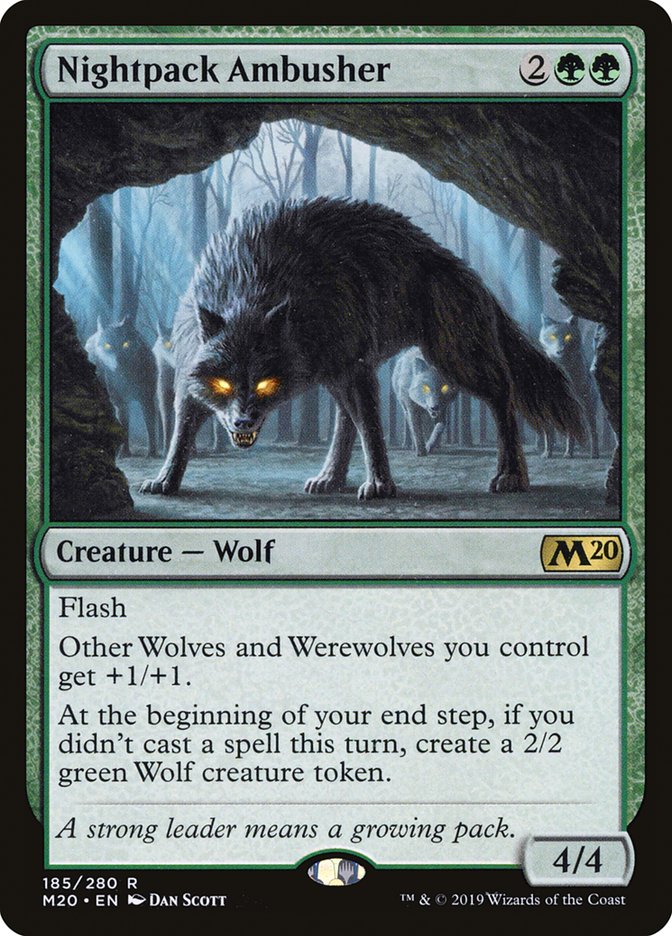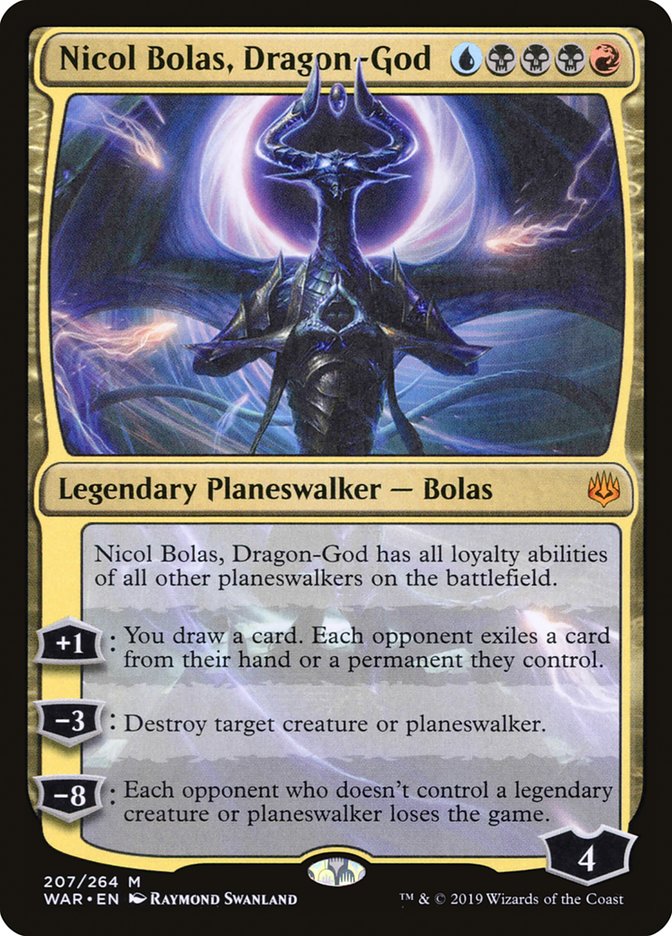Last week, Jonah Gaynor quietly took 32nd at SCG Worcester, piloting an innovative Bant Scapeshift deck in Standard. This new style of Scapeshift capitalizes on the incredible power of Field of the Dead.
Field of the Dead has a pretty low opportunity cost, all things considered. You’ve got some lands that make colorless instead of being good multicolored lands, and you’ve got extra incentive to play one copy each of a bunch of different duals, such as Thornwood Falls, in order to ensure a wide spread of names.
In return, you get a powerful end-game functioning sort of like Valakut, the Molten Pinnacle, except with 2/2s instead of three damage. Like Valakut, you also get to combine it with Scapeshift for an incredible combo.
Making sixteen to 24 power worth of Zombies isn’t necessarily going to win the game for you, but it’s definitely a pretty strong play. However, if you get Teferi, Time Raveler in the mix, now you’re assured of no counterplay from the other player, and your Zombie tokens can come down on the opponent’s end step, giving them virtual haste.
Here’s the list Jonah played last weekend:
Creatures (10)
Planeswalkers (6)
Lands (27)
Spells (17)

As is commonly the case when someone shows up with such an intriguing new archetype, various Magic Online players tried their hand at it. They discovered the archetype is quite strong and robust, with plenty of opportunity for improving card choices.
ObstinateBaloth turned the Elite Guardmages and Tamiyos into Elvish Rejuvenators, looking to speed the card draw in the deck up as much as possible, and even replaced the Search for Azcantas and some one-off removal spells with Arboreal Grazer for ever greater emphasis on a turbo gameplan.
Creatures (16)
Planeswalkers (4)
Lands (27)
- 2 Forest
- 1 Plains
- 1 Island
- 2 Temple Garden
- 2 Breeding Pool
- 2 Hallowed Fountain
- 1 Glacial Fortress
- 1 Sunpetal Grove
- 1 Hinterland Harbor
- 1 Azorius Guildgate
- 1 Selesnya Guildgate
- 1 Simic Guildgate
- 2 Temple of Mystery
- 1 Tranquil Cove
- 1 Thornwood Falls
- 1 Blossoming Sands
- 1 Memorial to Genius
- 1 Blast Zone
- 4 Field of the Dead
Spells (13)

ObstinateBaloth’s sideboard also represented a big jump forward, serving as the new template Bant Scapeshift decks would draw upon for inspiration.
As the week rolled on, buzz began to grow. Sam Black declared Scapeshift the next big thing. Still, when this weekend’s Grand Prix in Denver rolled around, I think it’s fair to say most of the field was caught off guard by the absolutely incredible showing by Scapeshift, particularly Bant builds. While certainly not the most popular deck on Day 1, it quickly rose through the ranks, with a total of seventeen Scapeshift players making Day 2. There, it continued to overperform, putting four copies into the Top 8, including eventual champion Luis Scott-Vargas.
Creatures (12)
Planeswalkers (4)
Lands (28)
Spells (16)

All four builds to Top 8 traded last week’s darling, Risen Reef, for a pair of Grow from the Ashes and a pair of Prison Realms for even more acceleration and a token level of defense.
While Risen Reef is an excellent card, I shared the skepticism around it in a deck with zero other Elementals and am happy to see it gone.
LSV’s list did feature a little spice for the mirror, with Field of Ruin instead of the Glacial Fortress everyone else played and a Crucible of Worlds in the sideboard (as opposed to Shifting Ceratops or Crushing Canopy).
Deputy of Detention helping round things out is also a little different from what we usually see, being especially effective at sweeping a dozen Zombie tokens at the same time if the other player “goes off.”
Chris Oien’s list was basically the most consensus version, with only the Glacial Fortress over Field of Ruin maindeck compared to Luis, and with sideboarded Shifting Ceratops and Crushing Canopy instead of Luis’s Deputy and Crucible.
Creatures (12)
Planeswalkers (4)
Lands (28)
- 2 Forest
- 1 Plains
- 2 Island
- 2 Temple Garden
- 2 Breeding Pool
- 2 Hallowed Fountain
- 1 Glacial Fortress
- 1 Sunpetal Grove
- 1 Hinterland Harbor
- 1 Azorius Guildgate
- 1 Selesnya Guildgate
- 1 Simic Guildgate
- 2 Temple of Mystery
- 1 Tranquil Cove
- 1 Thornwood Falls
- 1 Blossoming Sands
- 1 Memorial to Genius
- 1 Blast Zone
- 4 Field of the Dead
Spells (16)

Similarly, Jackson King’s list was basically identical with the exception of an extra Grow from the Ashes in place of the fourth Circuitous Route and a third Ixalan’s Binding in the sideboard in place of the second Shifting Ceratops.
Creatures (12)
Planeswalkers (4)
Lands (28)
Spells (16)

Allen Sun’s list was basically the same as Oien’s, save a Finale of Glory replacing a Hydroid Krasis and a bit of a different sideboard.
Finale of Glory seems a little fancy to me, but it does have a lot of the end-step Scapeshift action going on. I worry that it is a little too much the same thing, making us vulnerable incidentally to stuff people were bringing in to fight our Scapeshift anyway. Besides, Hydroid Krasis may not be as good when you’ve got twelve mana and a Teferi, but I’m not sure those are the games you need the help as much as the games where you Krasis for four or six mana.
Creatures (11)
Planeswalkers (4)
Lands (28)
- 2 Forest
- 1 Plains
- 2 Island
- 2 Temple Garden
- 2 Breeding Pool
- 2 Hallowed Fountain
- 1 Glacial Fortress
- 1 Sunpetal Grove
- 1 Hinterland Harbor
- 1 Azorius Guildgate
- 1 Selesnya Guildgate
- 1 Simic Guildgate
- 2 Temple of Mystery
- 1 Tranquil Cove
- 1 Thornwood Falls
- 1 Blossoming Sands
- 1 Memorial to Genius
- 1 Blast Zone
- 4 Field of the Dead
Spells (17)
Sideboard

The sideboard package of Knight of Autumn, Seal Away, and Time Wipe seems fine in the right metagame, but I’m not sure this week’s results will slide us that way.
While Mono-Red came out on top last weekend in Worcester, it didn’t actually have that good of a showing. This weekend, it was still kind of popular, but it also kind of got killed. To that end, I think the Knights are probably a worse Deputy of Detention for this week, or perhaps a worse Ripjaw Raptor, depending on the matchup.
Most folks prefer Ajani’s Welcome, and while I don’t have strong feelings between the two, I defer to the wisdom of the crowd here.
Time Wipe actually seems pretty sweet. It’s a little fancy, but I’m actually really into the idea of bouncing my Elvish Rejuvenator, let alone a Hydroid Krasis. I wouldn’t hate finding room for one of these in Luis’s sideboard.
While Bant Scapeshift is clearly the deck of the weekend, it doesn’t seem like we’ve seen all there is to see from Scapeshift decks. First of all, I see no reason why the Bant decks can’t keep getting better. What’s more, there are other possibilities folks are putting forward. For instance, Nathan Holiday’s Golos Scapeshift deck has some very exciting play in the mid-game, and some pretty resilient staying power.
Creatures (11)
Lands (29)
Spells (20)
- 4 Scapeshift
- 2 The Immortal Sun
- 2 Cast Down
- 3 Grow from the Ashes
- 2 Assassin's Trophy
- 4 Growth Spiral
- 3 Deathsprout
Sideboard

Instead of Hydroid Krasis, Holiday goes for the jugular with Golos, Tireless Pilgrim. It’s inherent card advantage to start with, and a great way to find Field of the Dead.
Then it’s a must-kill threat, as the seven-mana ability can just completely take over a game, effectively drawing three cards a turn and giving us an absolutely crushing mana advantage from casting them for free. As if that wasn’t enough, Golos becomes a devastating play on twelve, when you can cast it and use the activation all in the same turn.
Cavalier of Thorns has more of the Golos ramping goodness but hits hard and is frequently catastrophic to actually kill. Putting something powerful back on top of your deck lets you continue to build a dominating battlefield.
The Immortal Sun is excellent in the current metagame with so many planeswalkers getting shut down and so few answers floating around. Extra cards are obviously good too, and the +1/+1 is actually huge with the Zombie tokens, particularly when you’re on the backup plan.
That said, I don’t know if I can stomach losing out on Teferi, Time Raveler…
Cast Down and Assassin’s Trophy are no surprise, but Deathsprout raises an eyebrow. That said, it is thoroughly on-theme and a little underrated as a card in general. Still, I’m not really seeing the format go in a direction of big creatures good to kill with Deathsprout, at least in the week to come.
While I’ll be working with Golos for sure, I don’t think it’s done cooking yet. For this week, I’m a big fan of Luis’s build, particularly how forward-looking it is, as Scapeshift is likely to be this week’s most popular deck. The biggest thing I would be looking for is a way to improve the Nexus of Fate matchup, which likely also will be on the rise.
Despite Luis defeating Gregg Keithley on Nexus in the finals, the matchup is rough for Scapeshift. Obviously Teferi is great, but beyond that, we’re slower and don’t have all that much interaction. Nexus is already good but really declined this week, as Orzhov Vampires, Esper Hero, and Bant Ramp decks all tuned their lists to gain percentage against it and Elementals (which basically fell off the map this week).
Planeswalkers (6)
Lands (26)
Spells (28)
- 3 Search for Azcanta
- 2 Blink of an Eye
- 4 Nexus of Fate
- 4 Root Snare
- 4 Chemister's Insight
- 4 Growth Spiral
- 4 Wilderness Reclamation
- 1 Callous Dismissal
- 2 Drawn from Dreams
Sideboard

Keithley’s list is nothing unusual, keeping with the Drawn from Dreams trend.
The ability to look at that many cards is huge, and it’s a great way to power through folks trying to grind you down.
His sideboard is also color-hoser-centric with Aether Gust, Cerulean Drake, and Veil of Summer, but I think we’ll want to pull back on the red hate for even more anti-Scapeshift technology, particularly getting Teferi, Time Raveler off the table. Maybe Shifting Ceratops?
Other than Scapeshift, most of this weekend’s biggest decks sure did brick on Top 8s at Grand Prix Denver. Esper Hero, Mono-Red Aggro, Simic Ramp, Mono-Blue Aggro, and Jund Dinosaurs accounted for more than 40% of Day 2, yet put no one in the Top 8. There were two exceptions to this trend, however.
Feather decks were among the most popular, making up 10% of the Day 2 field, including Top 8 competitor Hunter Cochran:
Creatures (19)
- 4 Adanto Vanguard
- 3 Legion Warboss
- 4 Dreadhorde Arcanist
- 4 Tenth District Legionnaire
- 4 Feather, the Redeemed
Lands (22)
Spells (19)
Sideboard

Hunter’s list is very standard and a solid deck, but it must find some new technology in order to compete with Scapeshift. It’s not fast enough to run over them and it doesn’t play much meaningful interaction for their primary gameplan.
Likewise, I think Orzhov Vampires must step its game up, too, though I do think they are better-suited to do so.
Eric Hawkins Orzhov Vampires list is also pretty standard, but the path to more Scapeshift percentage is a little clearer with black cards.
Creatures (26)
- 2 Sanctum Seeker
- 3 Vicious Conquistador
- 4 Adanto Vanguard
- 4 Legion Lieutenant
- 3 Skymarcher Aspirant
- 2 Dusk Legion Zealot
- 4 Champion of Dusk
- 4 Knight of the Ebon Legion
Planeswalkers (4)
Lands (23)
Spells (7)
Sideboard

Obviously Duress is crucial, but we must see a meaningfully more targeted of a plan from Orzhov Vampires moving forward. Maybe that’s just more discard or whatever, but maybe we can do better. I don’t think we’re supposed to focus on the Zombie tokens, as it’s likely too late by then, but if we did want to go that route, we could consider Legion’s End.
I just think this is the wrong way, as they’ll have so much mana and so much ability to draw cards, it’s probably too little, too late. It also does nothing about the Teferi, Time Raveler setup.
The card I’m more interested in working with is Ashiok, Dream Render!
With Ashiok on the battlefield, they can’t Scapeshift, Circuitous Route, Grow from the Ashes, or use the search abilities of Deathsprout, Cavalier of Thorns, or Golos, Tireless Pilgrim. Exiling their graveyard is also interesting, and while Orzhov Vampires doesn’t make the best use of the milling, Scapeshift is more vulnerable to it than most.
To this point, I wonder if Ashiok, Dream Render is the secret to updating Drew Stewart’s Jeskai Superfriends deck.
Planeswalkers (20)
- 2 Karn, Scion of Urza
- 1 Teferi, Hero of Dominaria
- 4 Teferi, Time Raveler
- 3 Saheeli, Sublime Artificer
- 4 Narset, Parter of Veils
- 4 Sarkhan the Masterless
- 2 Chandra, Awakened Inferno
Lands (23)
Spells (17)
- 4 Shock
- 2 Opt
- 3 Spell Pierce
- 1 Lightning Strike
- 1 Jaya's Immolating Inferno
- 2 Cleansing Nova
- 3 Deafening Clarion
- 1 Lava Coil
Sideboard

It would not be hard at all to get a couple of Ashioks into that sideboard, maybe trimming a sweeper and a spot removal spell. We do have to be careful, though. The Scapeshift deck isn’t just a one-trick pony, especially if they are built with more heavy hitters like Golos and Cavalier of Thorns. Still, I love the idea of exploiting their overreliance on land-searching cards in the early-game.
I’m also still super-interested in Simic Flash as a possible way of fighting the Scapeshift decks in a way that makes things awkward for them. I’m not sure Ashiok is right for that strategy, but I’m definitely looking to give it a shot.
This Scapeshift deck will transform the Core Set 2020 Standard landscape, but it’s by no means broken. Time to re-engineer our lists and figure out the next step in the evolution of the metagame…
You gotta admit, Grixis would be pretty great against Scapeshift…


